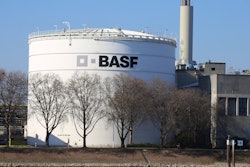A new study found that the U.S. oil and gas industry emits 60 percent more greenhouse gas methane each year than estimated by the U.S. Environmental Protection Agency.
Methane is a potent greenhouse gas that has more than 80 times the warming impact of carbon dioxide over the first 20 years after its release. The industry currently emits 13 million metric tons of potent greenhouse gas methane from its operations every year. Researchers found that a significant part of these emissions came from leaks, equipment malfunctions, and other “abnormal” operating conditions.
Natural gas losses from abnormal conditions are a waste of limited resources and increase global levels of ozone pollution. Traditional sampling methods systematically underestimate total emissions because they miss high emissions caused by abnormal conditions.
The climate impact of these leaks in 2015 was roughly the same as the climate impact of carbon dioxide emissions from all U.S. coal-fired power plants operating in 2015. These findings significantly undercut the potential climate benefits of natural gas use.
"This study provides the best estimate to date on the climate impact of oil and gas activity in the United States," said co-author Jeff Peischl, a CIRES scientist working in NOAA's Chemical Sciences Division in Boulder, Colorado. "It's the culmination of 10 years of studies by scientists across the country, many of which were spearheaded by CIRES and NOAA."
The new study also estimates total U.S. emissions at 2.3 percent of production, enough to erode the possible advantage of switching from coal to natural gas over the past 20 years. According to the Environmental Defense Fund, the methane lost to leakage is worth an estimated $2 billion, enough to heat 10 million homes in the United States.
The study drew on science experts from 16 research institutions, including the University of Colorado Boulder and the University of Texas Austin. These researchers assessed measurements from valves, tanks, and other equipment at more than 400 well pads in six oil and gas production basins and scores of mainstream facilities. The research also drew from aerial surveys covering large swaths of U.S. oil and gas infrastructure.
The assessment suggests that it is feasible to reduce methane emissions through quick detection of the root causes of high emissions and the deployment of less failure-prone systems. Repairing leaks and addressing other conditions that result in the accidental release of methane can also be effective.
“Natural gas emissions can, in fact, be significantly reduced if properly monitored,” said co-author Colm Sweeney, an atmospheric scientist in NOAA’s Global Monitoring Division. “Identifying the biggest leakers could substantially reduce emissions that we have measured.”
(Source: Cooperative Institute for Research in Environmental Sciences)






















